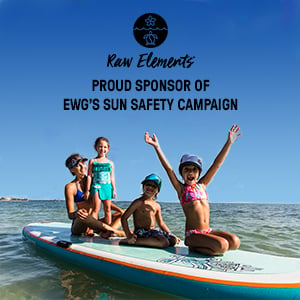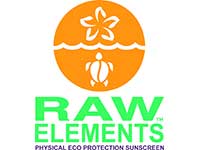

Americans do not do enough to protect their skin from sun damage and prevent skin cancer. Because we are stronger together, Environmental Working Group, forward-thinking companies and concerned citizens are teaming up to make a difference.

Most people instinctively turn away from intense glare. Such exposure is more than annoying. It can cause permanent damage to the eyes and the skin surrounding them, because both are particularly sensitive to ultraviolet radiation. UV-related eye injuries, ranging from temporary discomfort to disabling diseases, are common in the U.S. and worldwide (Roberts 2011).
Sunglasses can protect the eyes from some UV damage caused by UV and bright light in the visible spectrum. But not all sunglasses are created equal (FDA 1998; Health Canada 2000). Good sunglasses should offer UV protection, have a lens size large enough to cover the eyes and have a curve shape to shut out some light seeping in from above, below, side and the back (American Academy of Ophthalmology 2007). They should not be so dark they interfere with driving and seeing traffic signs.
UV radiation, composed of shorter UVB waves and longer UVA rays, can harm the eye at any time of day (Gao 2012). It is important to wear sunglasses even in the early morning and late afternoon hours, because, due to the sun's angle, the eye is subjected to nearly twice as much radiation as during the midday hours (Sasaki 2011). Reflected UV light is often overlooked but can be important. Most surfaces, even asphalt and concrete, reflect some light. Water can reflect up to 100 percent of the sun rays striking it, while fresh snow can reflect up to 80 percent (Vision Council 2013; WHO 2014). People should take care to wear sunglasses when they are on or near water or are around snow on a bright day.
Intense UV exposure can cause the eyes to tear up, become inflamed and feel as if they are burning. These symptoms generally show up several hours after the initial exposure and are usually temporary (Lucas 2011). Eye inflammation can be a problem for outdoor enthusiasts who don't use sunglasses or use those without side shields (McIntosh 2011). Mountain climbers are always warned about this danger (Mader & Tabin 2003). An extreme form of UV-induced eye inflammation is snow blindness, a hazard of skiing and mountain climbing. Extreme UV levels can kill the outer cells of the eyeball and cause severe pain until new cells grow (WHO 2014).
Chronic UV exposure can lead to structural changes in the surface layers of the eyeball, the cornea that covers the iris and pupil and the conjunctiva - the technical term for the membranes that cover the white of the eye and line the eyelids. People exposed to too much sun and wind sometimes develop benign growths called pterygia over the white of the eye. This condition is known as "surfer's eye," but it can also afflict sailors, kayakers, fishermen and others who spend time without good eye protection. At mild stages, it causes dry itchy eyes. At advanced stages, pterygia can spread to the cornea and affect vision, requiring surgical removal (Torres-Gimeno 2012).
Long-term UV exposure contributes to cataracts, meaning, clouding of the lens inside the eye. Cataracts are the main cause of visual impairment among residents of mountainous regions where UV levels are particularly high (Wang 2012). As well, UV is linked to age-related macular degeneration, in which the macula, a small area of the retina critical for sharp vision, deteriorates (Chalam 2011; El Chelab 2012; Roberts 2011). UV exposure may cause eyelid malignancies and ocular melanomas (Yam 2014; Yu 2006). Eyelid skin tumors, such as squamous and basal cell cancer, constitute 5 to10 percent of all non-melanoma skin cancers (Aktis 2013).
When choosing lenses, the most important factor is the degree of UV protection from direct and reflected light. Medium-dark or dark sunglasses and wraparound design are the best bet (Citek 2008; Dain 2010; Krutmann 2014; Wang 2010).
References
Actis AG, Actis G, De Sanctis U, Fea A, Rolle T, Grignolo FM. 2013. Eyelid benign and malignant tumors: issues in classification, excision and reconstruction. Minerva Chir. 68(6 Suppl 1): 11-25.
American Academy of Ophthalmology. 2007. Sunglasses. Available: http://www.aao.org/eyecare/tmp/sunglasses.cfm
Behar-Cohen F, Baillet G, de Ayguavives T, Garcia PO et al. 2014. Ultraviolet damage to the eye revisited: eye-sun protection factor (E-SPF®), a new ultraviolet protection label for eyewear. Clin Ophthalmol. 8: 87-104.
Chalam KV, Khetpal V, Rusovici R, Balaiya S. 2011. A review: role of ultraviolet radiation in age-related macular degeneration. Eye Contact Lens. 37(4): 225-32
Corning. 2014. Sunglass. Available: http://www.corning.com/ophthalmic/products/educational_info/sunglass.aspx
Dain SJ, Ngo TP, Cheng BB, Hu A, Teh AG, Tseng J, Vu N. 2010. Sunglasses, the European directive and the European standard. Ophthalmic Physiol Opt. 30(3): 253-6.
El Chehab H, Blein JP, Herry JP, Chave N et al. 2012. Ocular phototoxicity and altitude among mountain guides. J Fr Ophtalmol. 35(10): 809-15. FDA. 1998. Guidance for Industry: Guidance Document For Nonprescription Sunglasses. Available: http://www.fda.gov/medicaldevices/deviceregulationandguidance/guidancedocuments/ucm073951.htm
Gao N, Hu LW, Gao Q, Ge TT et al. 2012. Diurnal variation of ocular exposure to solar ultraviolet radiation based on data from a manikin head. Photochem Photobiol. 88(3): 736-43.
Health Canada. 2010. Sunglasses. Available: http://www.hc-sc.gc.ca/hl-vs/iyh-vsv/prod/glasses-lunettes-eng.php
Krutmann J, Béhar-Cohen F, Baillet G, de Ayguavives T et al. 2014. Towards standardization of UV eye protection: what can be learned from photodermatology? Photodermatol Photoimmunol Photomed. 30(2-3): 128-36.
Lucas RM. 2011. An epidemiological perspective of ultraviolet exposure--public health concerns. Eye Contact Lens. 37(4): 168-75.
Mader TH, Tabin G. 2003. Going to high altitude with preexisting ocular conditions. High Alt Med Biol. 4(4): 419-30.
McIntosh SE, Guercio B, Tabin GC, Leemon D, Schimelpfenig T. 2011. Ultraviolet keratitis among mountaineers and outdoor recreationalists. Wilderness Environ Med. 22(2):144-7.
Roberts JE. 2011. Ultraviolet radiation as a risk factor for cataract and macular degeneration. Eye Contact Lens. 37(4): 246-9.
Sasaki H, Sakamoto Y, Schnider C Fujita N et al. 2011. UV-B exposure to the eye depending on solar altitude. Eye Contact Lens 37: 191-195.
Torres-Gimeno A, Martínez-Costa L, Ayala G. 2012. Preoperative factors influencing success in pterygium surgery. BMC Ophthalmol. 8; 12:38.
Vision Council. 2013. The Big Picture: Eye Protection is Always in Season. Available: http://www.thevisioncouncil.org/consumers/media/PDFs/VCUVReport2013FINAL.PDF
Wang SQ, Balagula Y, Osterwalder U. 2010. Photoprotection: a review of the current and future technologies. Dermatol Ther. 23(1): 31-47.
Wang Y, Yu J, Gao Q, Hu L et al. 2012. The relationship between the disability prevalence of cataracts and ambient erythemal ultraviolet radiation in China. PLoS One. 7(11):e51137.
WHO (World Health Organization). 2014. The known health effects of UV. Available: http://www.who.int/uv/faq/uvhealtfac/en/index3.html
Yam JC, Kwok AK. 2014. Ultraviolet light and ocular diseases. Int Ophthalmol. in press
Yu GP, Hu DN, McCormick SA. 2006. Latitude and incidence of ocular melanoma. Photochem Photobiol. 82(6): 1621-6.
 />
/>


Want to see how your favorite sunscreen rates in EWG’s Sunscreen Database? The EWG Sunscreen Database update is coming in late May.











